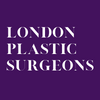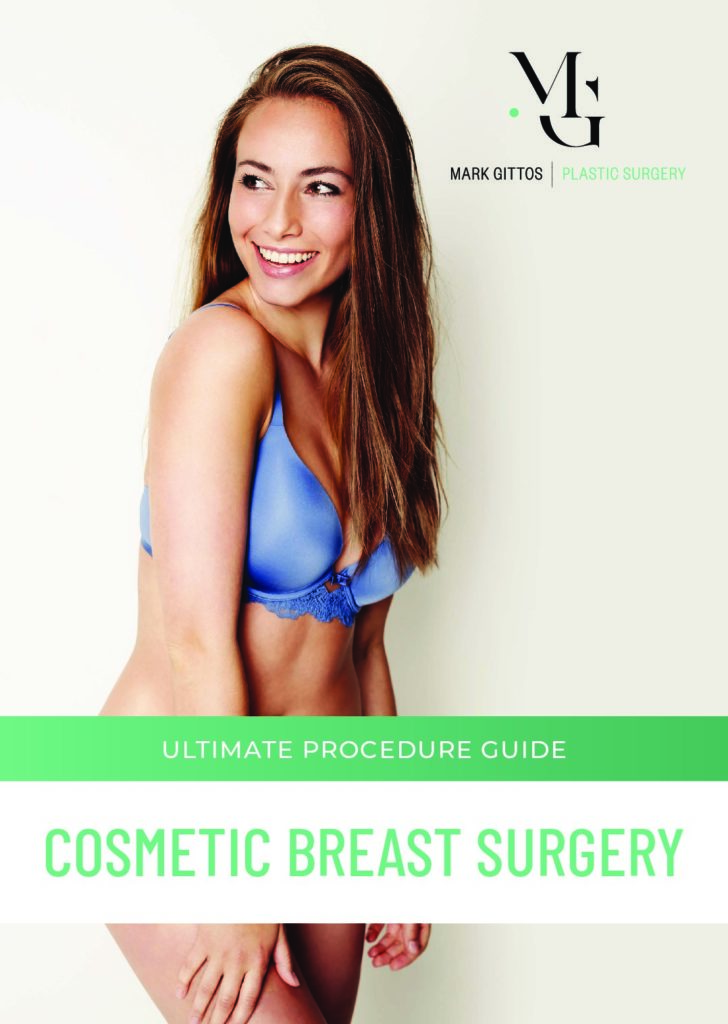Your Options for Breast Implant Surgery in United Kingdom with Mr Mark Gittos Plastic Surgeon – Choices of Implant Fill, Size, Texture, Shape, Projection, Placement and Incision Site
One of the biggest decisions you’ll make about a Breast Augmentation or Breast Implant Surgery is the type of breast implant you want to use.
What Breast Implants are MOST POPULAR?
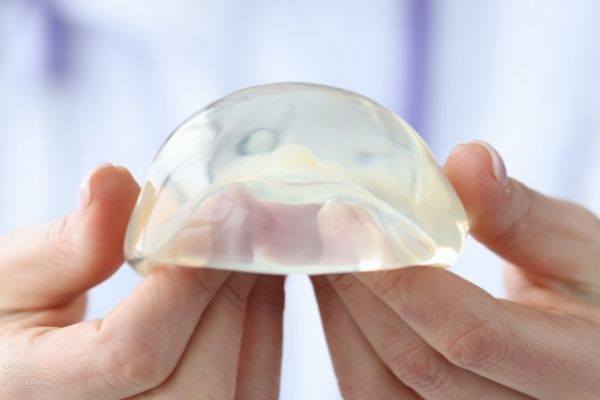
- The most popular breast implants used by specialist plastic surgeons in UK are the respected brands, Mentor Implants and Motiva implants.
- The most popular breast implant choice for patients and surgeons is high-grade Silicone implants
- Most surgeons are using round, smooth or micro-textured implants – NOT heavily textured implants
- The most popular breast implant sizes are around 300ml to 400ml
Things to consider when choosing the Best Breast Implants for your surgery
- What you’re aiming for in terms of augmentation and cleavage results. Another thing to consider is what the breast implants are made of in terms of the outer casing (shell) and internal contents (fill).
- Your existing physique and skin tissues. if you’re very thin or athletic – whether you have adequate body fat for coverage of the implant
- Your skin condition/elasticity and resiliency (will it hold an implant or do you need a breast lift along with your breast implants to get the rounded, uplifted breast shape you’re wanting?)
- All modern breast implants have a rubberised-type of silicone outer shell, no matter what fill material is used.
- So even a saline implant DOES have silicone in its casing or shell.
- The shell of a breast implant may be SMOOTH or it might have varying grades of texturing. It may have micro-texturing or a different form of textured surface (sometimes called ‘velcro-like’)
- Texturing is often used in teardrop implants to help the implant adhere to surrounding tissues so that it doesn’t rotate.
- There are different risks in using different types of implants and some textures may be preferred by your Surgeon. Ask about this during a consultation.
- The internal contents and silicone grades, or firmness and weight, may vary.
- So, too, can the implant shape (choose from round or teardrop, previously called anatomical).
Find out more about the range of MENTOR Implants
Find out more about the range of MOTIVA Implants
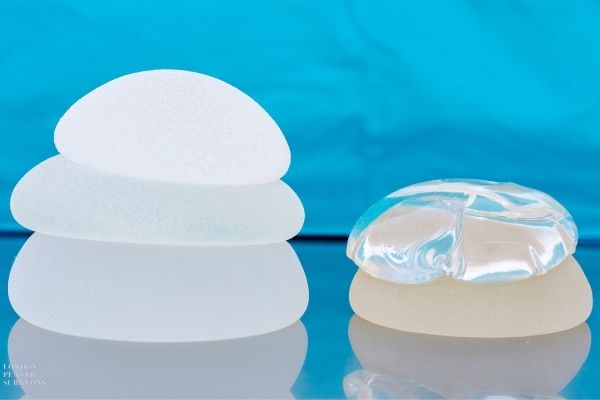
7 Options for your Breast Implants and Surgery
After choosing your Plastic Surgeon, a big step – the next things you’ll consider for your breast implant surgery is:
- the type of implant filling – Saline or Silicone
- the size of the implant – measured in ml
- the texture of the implant – smooth or textured
- the shape of the implant – Round or Teardrop (Anatomical)
- the projection – low or high profile
- the breast implant placement – above the muscle, below the muscle or dual plane (Between the muscle)
- the breast implant surgery incision site – under breast IMF, Armpit or other incisions
The following sections describe these 7 options in more detail.
Download Our FREE Breast Surgery Guide
Click to DOWNLOAD Mr Mark Gittos Ultimate Guide to Cosmetic Breast Surgery
1. Silicon or Saline Filled Implants? – What is a breast implant made of?
There are primarily two of breast-implant fill material
- Saline (saltwater) encased in a silicone outer shell and filled at the time of surgery.
- Medical-grade Silicone gel (e.g, high-quality silicone gel for Mentor or Motiva brands)
What’s more popular for Breast Enlargement – Saline or Silicone Breast Implants? Saline-filled implants gained a bit of popularity about two decades ago. People thought it might be a more natural approach as it used saltwater, but today, most patients and surgeons prefer silicone breast implants for numerous reasons. So these are the more popular option for Breast Augmentation at the current time, and these can provide give shapely, natural-looking breast results. A large majority of Specialist Plastic Surgeons in United Kingdom, and patients and Surgeons around the world, are found to predominantly prefer to use SILICONE implants because of their:
- natural look
- natural feel including during dynamic movements, impacted by:
- the size of the implant in relation to a skin condition
- the breast implant placement/pocket creation
- implant insertion techniques
- strength/cohesive gels that aim to prevent leakage
- not apt to suddenly deflate like a saline implant
- easier for patients to make proper sizing choices
- projection is easier to control/predict
Breast Augmentation with Saline or Silicone Implants helps women gain cleavage and greater breast volume. For some women, breast implants help balance out their lower physiques with upper body curves, especially if they have wider hips but little natural breast tissue. Even thin patients and bodybuilders can have natural-looking breast augmentation.
Mr Gittos has extensive experience with both saline and silicone breast implants. The choice between saline and silicone is down to:
- What you want to achieve with your implants
- The implants you prefer
- Which implants your surgeon believes will get the desired results
Saline is considered safer, due to the fact that the body can absorb saline if a rupture occurs. They can also be adjusted by your surgeon to get the right size for your body. However, many do not like the feel of saline implants. Some patients feel silicone provides a more natural feel. Saline, on the other hand, runs the risk of a waterbed effect, where the skin can ripple with the movement of the saline. Silicone implants are also available in a wider range of sizes and textures. However, if silicone ruptures you will need to have your implants removed and replaced immediately.
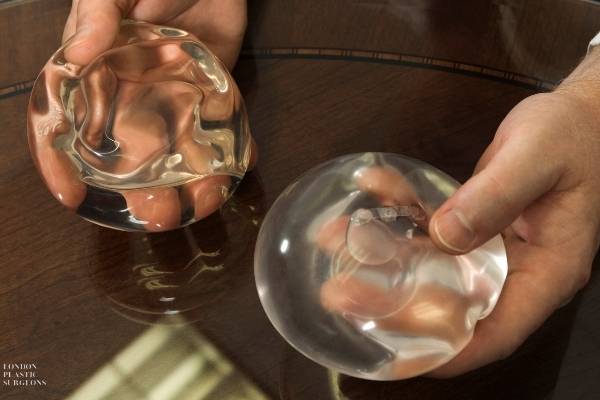
Pros and Cons of Silicone Gel vs Saline Filled Implants
- Silicone implants have a lower incidence of rippling compared to saline-filled implants due to the consistency of the silicone gel.
- They are designed to have a more natural feel similar to that of breast tissue and are known to hold their shape better than saline-filled implants.
- These implants tend not to deflate, but they can rupture in rare instances. Cohesive gel contents in modern implants, such as those by Motiva and Mentor, are designed NOT to migrate if there is a rupture (ruptures are, fortunately, not a frequent occurrence and many women have intact breast implants for many years and decades).
- If gel-filled implants do leak or rupture, there is an increased risk of capsule contracture or hardening of the breast (see Risks to consider).
- Ask Mr Gittos about different types of Implants and what she believes will suit YOUR desires and augmentation needs the best in terms of your choices and implant preferences.
A potential problem with Saline Filled Implants – can deflate or ripple
- Saline-filled implants have a ‘water bed’ like feel, and have been known to cause a ripple effect.
- If a patient has small amounts of breast tissue, to begin with, the rippling of the tissue can be seen through the skin.
- These problems can be reduced by using smooth surface round implants that are overfilled (still within the manufacturer’s specifications), resulting in an implant that is firm to the touch. The implants may also look spherical or rounded, which is not necessarily a very natural appearance. If saline implants deflate they do so rapidly, often within a few hours, and the saline solution is easily absorbed by the body.
- Also, as with all prosthesis, there are other risks or potential issues such as capsular contracture, skin rippling or bottoming out.
- Discuss these with your surgeon during a consultation.
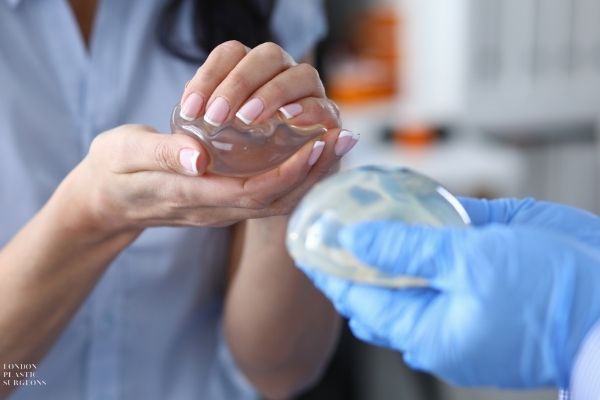
2. Breast Implant Size. Big or Small?
- Our implant manufacturers, including Mentor and Motiva, can supply thousands of different implant volumes in various dimensions.
- Saline-filled implants can be filled after they have been inserted into the breast pocket, while silicone gel-filled implants are manufactured as a whole.
- Silicone implants are the preferred option for many women and Plastic Surgeons because of their natural look and ‘feel’; as well as other benefits listed above.
You’ll have a wide variety of Breast Implant Size choices and projection options available to you. Mr Gittos should be able to assist you to select the ideal implant shape and size just for you to attain the volume increases or breast proportions you’re seeking. Remember, however, that results can vary and that size choices should be made thoughtfully and in relation to your skin health, lifestyle, exercise preferences and overall physique.
Download the Motiva Sizing information PDF
3. Breast Implant Surface: Smooth or Textured?
Implants can have a smooth surface or a textured surface. As well as coming in a variety of shapes, sizes and fill, breast implants can also have different shell textures. The shell is the surface of the implant, and generally what you will feel under the skin.
Smooth Texture Implants
These implants have the smoothest, most natural feeling texture. Many patients prefer them as they do not feel different under the skin. However, smooth implants are more likely to move in the breast pocket as their surface can be difficult for natural tissue to adhere. Smooth-surfaced implants feel softer than textured surfaced implants and are relatively easy to insert
Textured Implants
These implants have a rougher outer texture that can feel odd under the hands. However, this textured surface allows natural tissue to adhere to the implant surface, making it less likely to shift in the breast pocket. Textured implants reduce the risk of implant movement due to the rough surface allowing surrounding breast tissue to adhere to the implant. Recent concerns about risk of BIA-ALCL – a lymphoma associated with rough-textured implants has seen a dramatic decline in the use of textured implants worldwide. Mr Gittos mostly uses Smooth Motiva Implants.
4. Breast Implant Shapes – Round Breast Implants or Teardrop Shaped Implants (Anatomical)
Are round implants or Teardrop-shaped breast implants better? The answer is – it depends on numerous factors and that after surgery, you and others may not be able to tell the difference.
- The shape of implants needs to be considered as well.
- Implants can vary from manufacturer to manufacturer.
- They may be available in a round shape or tear-drop shape.
Can you tell what type or shape of the implant was used AFTER surgery – e.g. teardrop or round – by looking at the breasts of surgery patients? In women who have a moderate amount of breast tissue, it can be difficult to tell whether an augmentation has been performed with either round or anatomically shaped implants. Even surgeons can’t spot the difference as good results look natural, and breasts also tend to adapt to a natural teardrop shape over time.
- Often, you cannot tell once the implant has settled into its position.
- Round implants, a popular option, can leave patients with just as natural-looking results as teardrop implants in many cases, so long as the right Surgical placement approach is used.
- Skin also has an impact on what your breast tissues CAN or CANNOT handle in terms of size or type.
- Droopy breast skin may require a breast lift or a combined surgery of a Breast Lift/Breast Augmentation using breast implants (Breast Augmentation Mastopexy).
Anatomical implants must have a textured surface to reduce the amount of implant movement within the breast pocket. Ask your Surgeon about textural differences and preferences. Round vs Teardrop Implant Shapes Round implants are usually available in a smooth or textured surface (Mentor or Motiva). Teardrop implants HAVE more textured surfaces; ask your Surgeon about the PROS and CONS. Remember, if a teardrop implant rotates, it might look unnatural or deformed in shape, requiring surgical correction.
- If a round implant rotates in the breast pocket, it will not tend to affect the breast shape.
- Whereas, if a teardrop or anatomical breast implant rotates within the breast pocket, it must be repositioned to restore its natural appearance.
Tear Drop Shape Breast Implants
These implants are designed to follow the natural profile of the breast. Some women feel they achieve the most natural-looking results. However, implants can move in the breast pocket. When a teardrop implant shifts, it can distort the shape of the breast. Further, these implants can be tailored to your breast dimensions, as well as providing a better lift for women with sag of skin looseness.
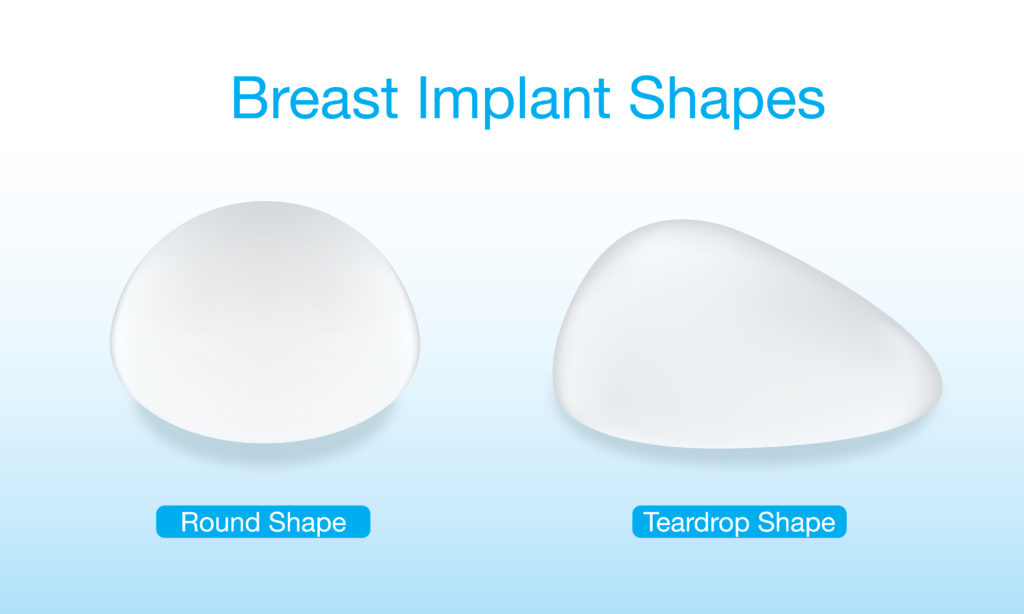
5. Breast Implant Projection – low, moderate and high profile
Implant Projection is how much the implant protrudes (or its height when it sits on a table).
Your surgeon will work out which profile will get the outcome you desire.
More implants come in a range of different profiles which helps with breast projection.
6. Breast Implant Placement Options: The Placement Pocket
Another factor to consider when getting Implants is where your Surgeon will place them in relation to existing breast tissues. There are three common approaches for Breast Implant placement.
- placing the implant in front of the pectoral muscle
- behind the pectoral muscle
- or partially behind the muscle (dual plane).
Each of these methods offers a different type of result, and Mr Gittos will be able to suggest the best-practice Breast Implant approach for your goals, depending on your skin, body composition, existing breast tissues, lifestyle and desired outcomes. Remember, getting good results depends on a variety of aspects of your surgery. It’s important to plan the surgery carefully but also to follow pre-surgery and post-surgery instructions, not to smoke, but to eat well, rest, not exercise or do too much too early, and to understand the healing and recovery processes and time frames. These can ALL vary and all surgery has risks.
Submuscular (Implant Placement)
- Placing the implant underneath the pectoral muscle allows the soft tissue to cover the implant and disguise it, therefore achieving a more natural result.
- More often a surgeon will recommend placing the implant behind the pectoral muscle.
- Recovery in the first couple of days is a little more uncomfortable when the implant is placed/located behind your pectoral muscle, but the results over the long term mean you’ll usually get a more natural-looking outcome.
- This can vary from patient to patient, however, and may depend on what you’re starting with.
Sub-glandular (Implant Placement in front of the muscle)
- If there is already a good volume of breast tissue present (as determined by pinching up a fold of breast tissue) to hide the defined implant edges, your surgeon may recommend placing the implant in front of the pectoral muscle.
- This procedure often affords a more comfortable recovery period, and faster procedure time as the muscles are not disturbed during surgery.
Dual Plane Breast Augmentation placement options
- Partially behind the muscle, is another breast implant placement option you may be discussing with your Surgeon.
- Ask Mr Gittos what she recommends during a confidential consultation in Hawthorn or in Berwick.
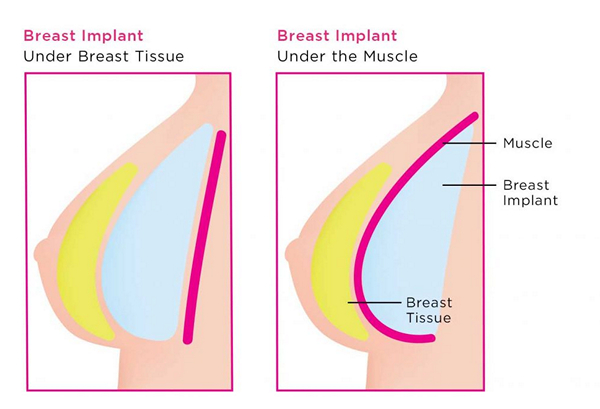
7. Breast Augmentation Implant Techniques – Incisions and Scars
There are 3 types of breast Implant Incisions, but in modern times, typically only 2 will be used – armpit or IMF – and the inframammary (IMF) incision approach is by far the most common.
- All incisions will leave a scar.
- But in patients who experience normal scarring and recovery, they fade over time and are usually inconspicuous when wearing clothing or when the hands/arms are at rest by the sides (versus raised overhead).
- Mr Mark Gittos will be able to explain the level of scarring visibility for each approach and recommend which approach is best for your procedure.
- Read the breast augmentation scar pages for information if scars after breast surgery are a concern.
Breast Implant Techniques
There are a variety of breast implant incision techniques your surgeon may use. These include:
A. Inframammary Incision – under the breast
This incision technique is done in the crease beneath the breast and is considered the safest technique. Further, for women considering breastfeeding, this incision is the most likely to retain the ability to breastfeed. Finally, controlling where the scar and breast crease is going to allow for the optimal implant selection and position. Inframammary Incision – in the breast crease under the breast (inframammary fold or IMF)
- The most common incision site location for breast augmentation is the crease beneath the breast (inframammary).
- This provides the most direct access to the implant pocket site and the most reliable approach for achieving a symmetrical result.
- The scar is usually quite short here, from approximately 2.5-3.5 cm (a short scar) to 4cms or more in length, sometimes longer.
- Motiva and Mentor brand implants may impact the potential length of your scar, as will existing tissues, prior surgery and insertion preferences/implant sizes.
If there are concerns about a scar in the inframammary fold or if the fold isn’t developed and the scar is likely to be visible, a periareolar approach can be used.
B. Periareola Incision – around the nipple
This breast augmentation incision is made around the nipple area. Periareolar is generally not the favourite procedure for both surgeons and patients. The placement can be difficult to ensure the best placement of the implant. However, when used with an inframammary incision, your surgeon can provide augmentation and lift. Periareolar Incision (around the nipple) – is simply not used as much today because of higher risks to breast functions.
- When it comes to the areola method, the incision is made around the outline of the areola.
- The goal is to make the incision in between the dark area of the areola and its surrounding skin, which helps to minimise scar visibility.
- A disadvantage of the periareolar incision is higher risks of complications such as lost nipple sensation, or being unable to breastfeed (compared to other incision methods).
C. Transaxillary Incision – through the Armpit
This incision is made through a natural crease in the armpit but is usually only recommended to patients at risk of keloid scarring. This procedure has the highest rate of complications and if revision surgery is required, the incision site cannot be reused. Further, transaxillary incisions must carefully avoid nerves and lymph nodes in the armpit, while also properly positioning the implants. As a result, this is not often recommended. Transaxillary Incision – “Asian Breast Augmentation”
- This type of incision is made in the armpit fold.
- It creates a channel from the armpit to the breast so the implant can be placed behind the nipple.
- The benefit of a Transaxillary Incision is its placement, making the scar virtually invisible as it rests within skin-folds in the armpit area (there WILL be a scar, however, and it may be seen especially in certain positions – it’s just less obvious in the armpit for SOME patients, especially when their arms are by their sides).
- Women with darker skin that is prone to keloid scarring, or who are wanting to have children and breastfeed after breast augmentation, may be good candidates for this incision type, but it can only be used ONCE for primary surgery (or sometimes it can be used for removal of an implant, by some Surgeons, but not for removal and replacement).
- There are some added risks to this approach – ask your Surgeon about the PROS and CONS of armpit-area incisions for breast implant placement.
- Secondary Breast Augmentation or size changes will require an inframammary fold incision.
Ask Mr Gittos for more information during a no-obligation consultation, including where the implant is best placed for your breasts, skin, your body composition and your cleavage enhancement/breast augmentation goals.
It is important that you have all these questions answered. As such, Mr Gittos is excited to help you through this complex process.
Different Breast Augmentation Options
Modern breast augmentation procedures offer a variety of techniques. These are:
A. Breast Implants
The most common technique of breast augmentation is the use of implants. Implants help project the breasts forward, creating an enlargement of the breast. Implant placement can be done on top or behind the pectoralis muscle. The right combination of patient, implant and placement can produce highly satisfying results.
B. Fat Grafting
Grafting takes fat from elsewhere in the body and injects it into the breasts. It is an alternative route if you are uncomfortable with breast implants. Unwanted fat is removed from the area and transferred to the breasts through small incisions. However, this procedure does not create as significant an enlargement as breast implants and is less predictable.
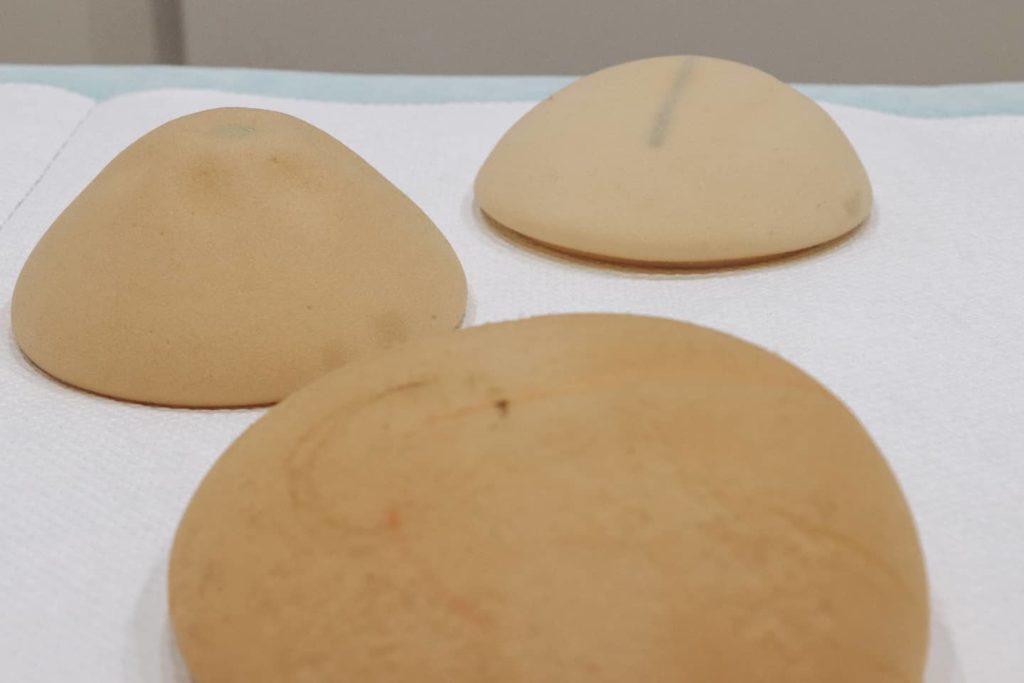
Risks and Complications of Breast Implants
Breast implants can come with risks and side effects. These can be long or short term complications.
Short Term Complications
- Generally, short term complications of breast implants include pain, bleeding or infection. If you suspect a complication, contact Mr Gittos immediately to discuss what to do next.
Long Term Complications
- There are some issues with breast implants rupturing. Whether you choose silicone or saline, if you have an implant rupture, you need to speak to your doctor immediately.
- Capsular contracture is also a possible long term complication of breast implant surgery. In response to a foreign body, like implants, the body coats it with a layer of collagen. This becomes a bag or capsule after about 4 weeks. This capsule is thin and strong and is closely applied to the surface of the implant. If the capsule becomes irritated or inflames, it thickens and contracts. As a result, the breast may become round and firm. This is not aesthetically pleasing and uncomfortable. It also requires revision surgery. There is also a risk of BIA-ALCL associated with textured implants. Talk to Mr Mark Gittos if you are concerned about BIA-ALCL or BII.
- Any surgery has risks. Discuss these with Mr Gittos during your breast implant consultation.
What will You get scarring from Breast Implant surgery?
All surgeries result in scars and breast implants are no different. Your surgeon will make an incision on the breast, in the breast crease, or in the armpit to insert your implants. This will cause scarring, but an experienced surgeon can help decrease your amount of scarring. They can also recommend or provide post-operative treatments to improve scars. After a few months, the scar will be harder to see.
Are Breast Implants Right for Me?
Breast implants and breast augmentation are highly individualised procedures and may not be suitable for all patients. Mr Gittos will discuss your needs, your medical history, and your breasts to determine the best procedure for you. Please remember that:
- Breast augmentation and breast implants do not correct drooping breasts.
- You may require a secondary procedure, like breast lift, to get the look you want.
- Breast surgery may affect your ability to breastfeed – however individual results vary.
- Augmentation and implants are not guaranteed to last forever. As you age, experience weight gain or loss, or have children, further surgery might be required.
- Smokers are at increased risk of complications from any surgery – you will need to quit smoking if you are serious about surgery.
Implants Do Not Replace a Breast Lift
It is important to remember that breast implants make the breast larger. When used alone, they will not adequately lift the breast or correct the effects on breasts after breastfeeding, weight loss, weight gain, or skin stretching. You may need to consider a breast lift or breast lift with implants if you require substantial lifting of the breast tissue.
How Long Do Breast Implants Last?
Breast implants are not considered life long devices. You will likely undergo breast implant removal and replacement over the course of your life. This is known as breast revision. Your implants may need replacing after 5, 10 or 20 years. Some patients never require implant revision, but many do.
If you would like more information about breast implant surgery, contact Mr Gittos and his team today. We can organise your first consultation with Mr Gittos to discuss any further questions you might have.

Cost of Breast Implant Surgery – How much do Breast Implants Cost?
The cost of implant surgery varies from patient to patient, as well as from surgeon to surgeon. The more qualified and experienced your surgeon, and the more complex your procedure, the higher the cost. To get the most accurate quote for your needs, it is best to discuss this in a consultation with Mr Gittos. Breast implants are a highly personal decision, and each body varies. As a result, Mr Gittos’ procedures are highly individualised, as is the cost. Following your consultation, Mr Gittos will provide you with an estimate of your procedure, as well as informative materials to read before undertaking surgery.
How to find a Breast Implant Surgeon in United Kingdom for you
Always choose a specialist plastic surgeon with lots of breast implant experience. Look at their online reviews and view their past patient photos. Find a surgeon that you feel comfortable with. Mr Mark Gittos has done thousands of breast surgeries all over the world. Always seek a second opinion.
About Mr Mark Gittos FRACS (Plast) – London Plastic Surgeons
Practice locations in London & Essex, UK and Auckland, New Zealand.
Mr Mark Gittos offers high quality, natural-looking cosmetic surgery results and is highly experienced in Breast, Body and Face Surgery having performed over 4000 Surgeries in the last 26 years.
With world-wide expertise Mr Gittos is an expert in breast, face and body surgery for men & women.
Mr Mark Gittos is a leading Specialist Plastic Surgeon and operates a practice in London UK and Auckland New Zealand. His practice focuses on both surgical and non-surgical procedures, each designed to help restore, improve or change a physical characteristic or problem. The first step in every case is to talk through your personal requirements and explore all the options, before deciding on the most effective solution.
Naturally, before any treatment is begun, we will explain clearly the advantages and risk factors; so that you have the information you need to make an informed decision that is best for you. Visit the practice to find out more.
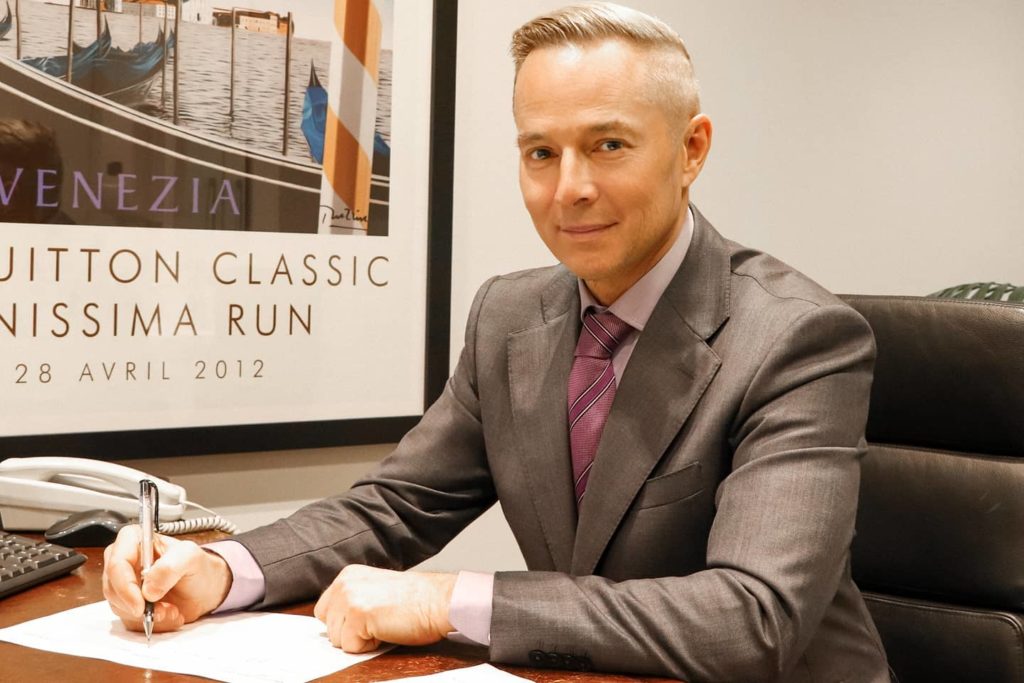
NEXT STEPS
Do your Research
- Read the Website and Blogs relevant to your procedure
- Browse our Frequently Asked Questions including how to choose a Surgeon for your procedure
- Download the Guides to Surgery
What to Bring to your Plastic Surgeon Consultation
- Bring a friend or relative to help discuss the information and your choices
- Take lots of notes and read the documents provided thoroughly
- Want more information before scheduling your consultation?
Book your Initial Surgery Consultation
- A Referral from your GP or specialist is helpful but NOT essential – you can have a consultation without a GP Referral
- Email us or Call in London on 07557 858156 to arrange your surgeon consultation appointment.
- Secure your consultation with Mr Gittos by paying the Consultation Fee in advance
- A consultation with Dr Gittos is £195.
Please contact us to arrange to book a consultation or to speak with our Patient Care Advisor.
Send an enquiry form today or UK phone 07557 858156 during Clinic Hours
